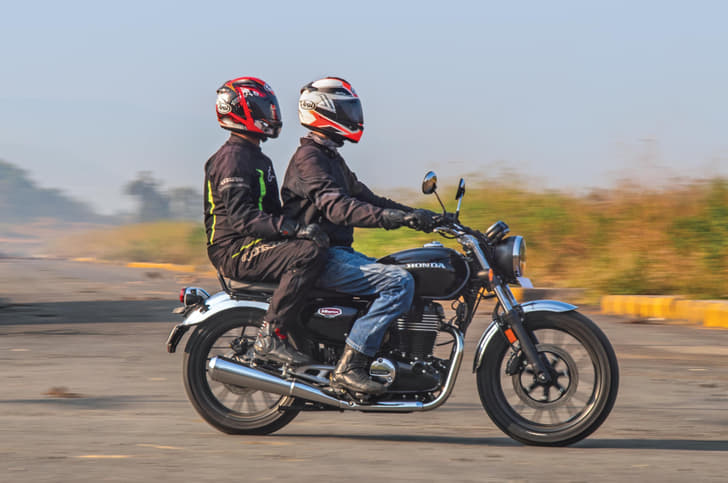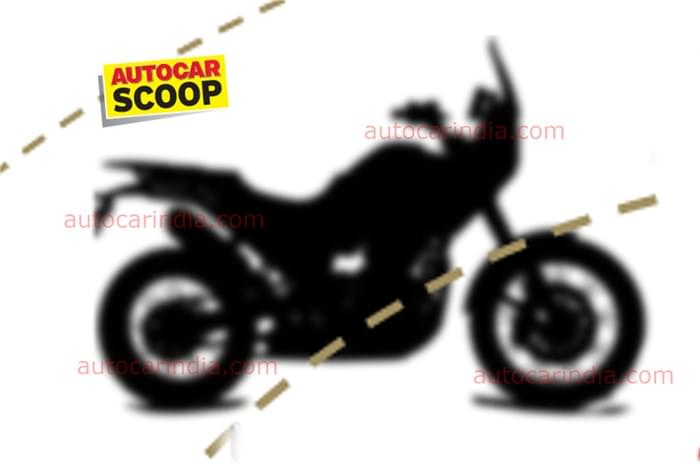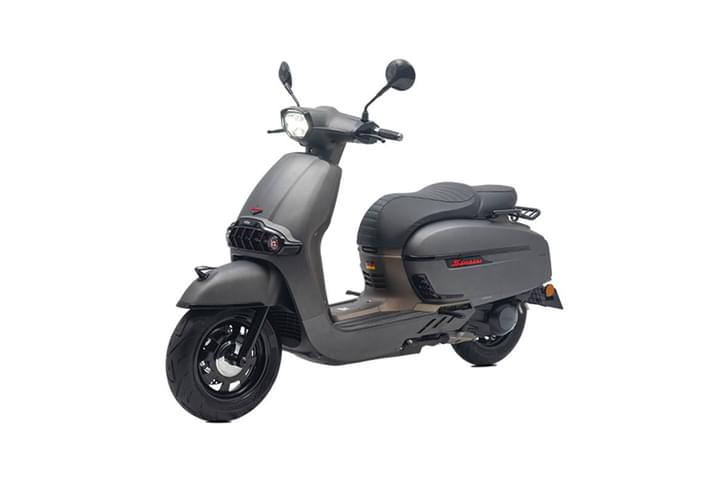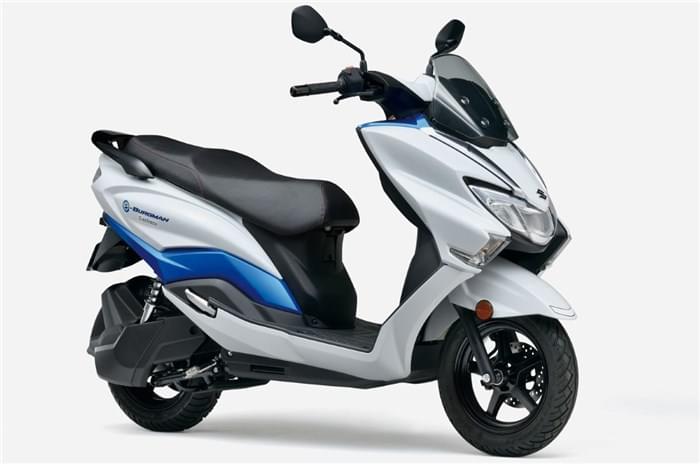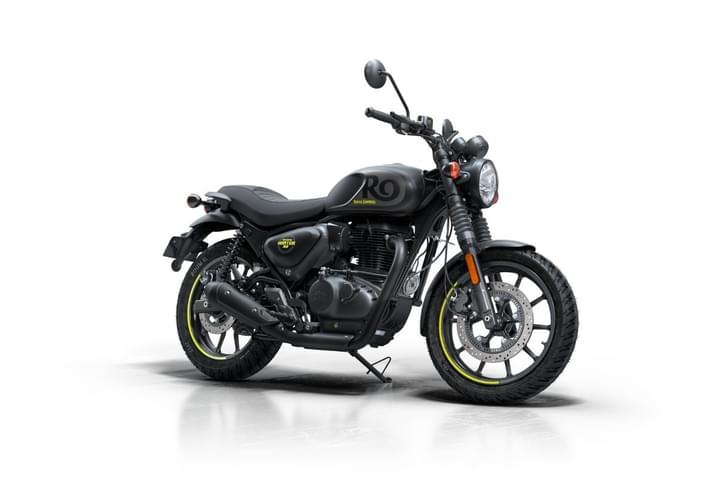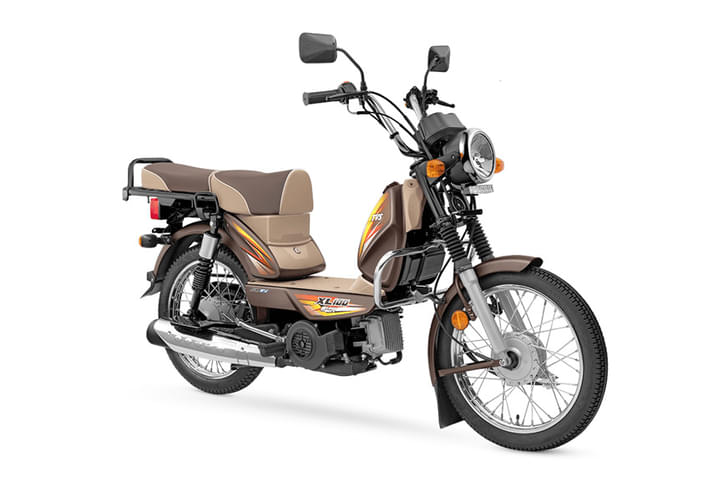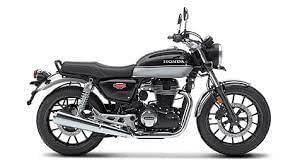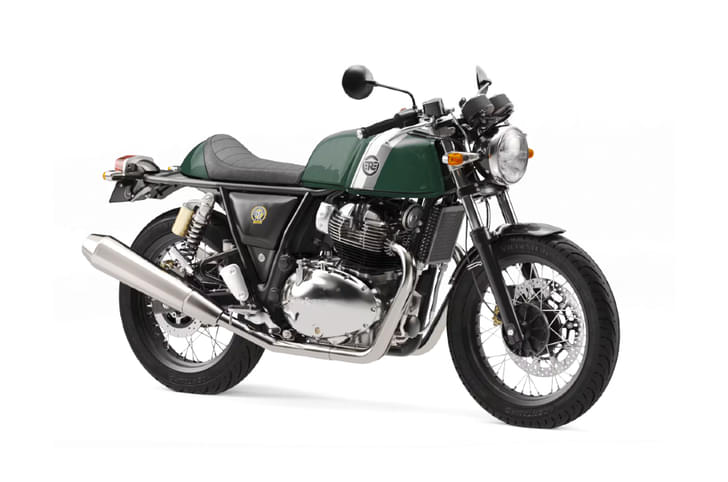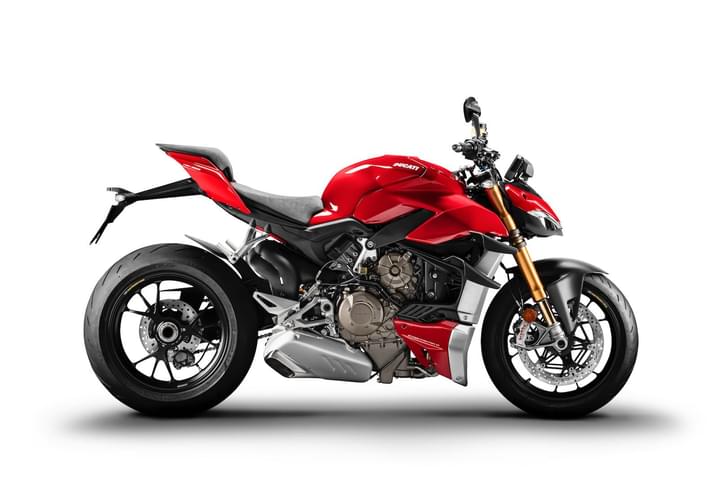When we first rode the new Honda Hornet 2.0, the bike was impressive enough for us to say it deserved a comparison with its more powerful rivals from Bajaj and TVS. And here we are, with the Hornet going head-to-head with the Bajaj Pulsar NS200 and the TVS Apache RTR 200 4V. So why are we comparing a 180cc Honda vs 200cc machines? Well, Honda has priced it right up there with these 200s, so the idea here is to find out whether this bike is actually punching above its weight or if it’s just another case of optimistic pricing.
Bajaj Pulsar NS200 vs Honda Hornet 2.0 vs TVS Apache RTR 200 4V: Styling
What the Honda has going for it is a sharp and handsome design, particularly from the front end. The bike gains more muscular bodywork over the original Hornet and this goes well with the chunky new USD fork – a segment first. A sharply designed engine cowl also adds to the sporty theme.
Over at the side and back, the Hornet takes on a more familiar avatar, and the rear end particularly looks very similar to the old model. The rider is fed information via a simple and neat negative LCD display. This unit has five levels of adjustable brightness, a battery voltage meter, two trip meters and a gear position indicator. Like the other two, the Hornet uses a 12-litre fuel tank, but instead of the usual ignition lock position, the key now slots in just ahead of the fuel tank.

If the Honda has the newest design here, the Bajaj is definitely the oldest. Little has changed since the NS200 originally broke cover nine years ago, but I think this is still a great looking motorcycle. The NS has clean, sporty and rather European lines, which is not surprising, given that it was, in fact, designed by a European. The latest 2021 colour schemes scream for attention and the bike we’re riding not only has white wheels, but even a white frame. It’s a little too loud for my taste, but that’s a deeply personal thing. Where the NS does feel its age is in the instrument console, and even though the switches are backlit, they do look and feel cheap. However, there’s no question that this is the biggest and most spacious bike here – something that tall riders will appreciate.
Where Bajaj really hasn’t done much to update the NS, apart from meeting government mandated norms, TVS has been steadily at it with the RTR. The latest update has given the bike a face I just can’t get used to, but also a number of new features (more on that later) that I most certainly can. Aside from the DRLs that make it look like a startled Pokémon, the RTR remains a handsome motorcycle with pretty sporty lines. However, it does feel like a compact one.
| Specifications | |||
|---|---|---|---|
| Honda Hornet 2.0 | TVS Apache RTR 200 4V | Bajaj Pulsar NS200 | |
| Price (ex-showroom, Delhi) | Rs 1.28 lakh | Rs 1.33 lakh | Rs 1.33 lakh |
| Engine layout | Single-cylinder, air-cooled | Single-cylinder, oil-cooled | Single-cylinder, liquid-cooled |
| Displacement | 184.4cc | 197.75cc | 199.5cc |
| Power | 17.26hp at 8500rpm | 20.82hp at 9000rpm | 24.5hp at 9750rpm |
| Torque | 16.1Nm at 6000rpm | 17.25Nm at 7250rpm | 18.5Nm at 8000rpm |
| Gearbox | 5-speed | 5-speed | 6-speed |
| Wheelbase | 1355mm | 1353mm | 1363mm |
| Ground clearance | 167mm | 180mm | 168mm |
| Fuel tank | 12 litres | 12 litres | 12 litres |
| Kerb weight | 142kg | 152kg | 156kg |
| Front suspension | USD fork | Telescopic fork | Telescopic fork |
| Rear suspension | Monoshock | Monoshock | Monoshock |
| Front brake | 276mm disc | 270mm disc | 300mm disc |
| Rear brake | 220mm disc | 240mm disc | 230mm disc |
| Tyre size (f/r) | 110/70-17 / 140/70-17 | 90/90-17 / 130/70 R17 | 100/80-17 / 130/70-17 |
The clip-on handlebars are tall enough for comfort, but the RTR’s riding position is rather constricted due to the pretty high-set foot pegs. There’s no doubt that the high foot pegs lend it more cornering clearance than the other two, but my 6ft 1in tall frame has never been able to stay comfy on this bike for long durations. If there’s one bike here that’s better off for shorter riders, it’s the TVS.
Whether tall or short, you can’t help but appreciate the look and detailed information of the TVS’ LCD display, as well as its premium feeling switchgear and adjustable levers. In terms of the impression of overall quality and finish, the RTR is the nicest one here too.
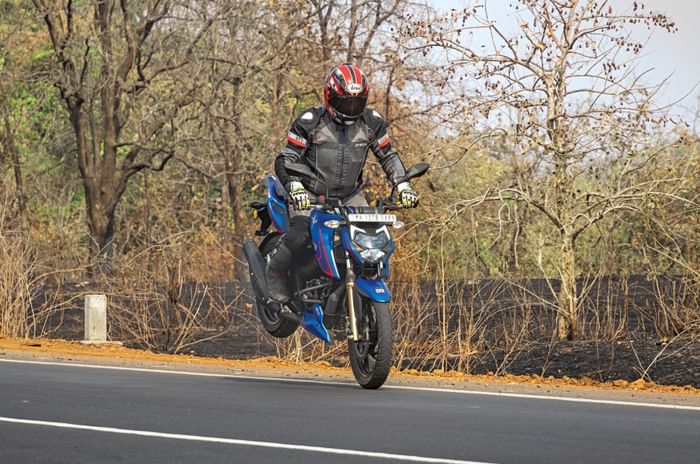
Bajaj Pulsar NS200 vs Honda Hornet 2.0 vs TVS Apache RTR 200 4V: Engine and performance
Visually, each bike can hold its own in this comparison, but when it comes to the engines, the differences become far more pronounced. You’ve got three very different approaches to the engines here. The Honda’s is a simple two-valve air-cooled motor that makes a little over 17 horsepower. The RTR takes a more sophisticated approach to things with a four-valve head and an oil-cooler, and it makes nearly 21 horsepower. And finally, you have the NS200, which, ironically, has the most modern powertrain. The NS uses a four-valve, liquid-cooled engine that hammers out 24.5 horsepower. It’s also the only one with a 6-speed gearbox.
It’s no surprise that the Pulsar is the fastest accelerating bike here and the Honda the slowest, but the difference isn’t as large as you’d imagine. In the 0-60kph run, the Honda is just 0.4sec slower than the NS, although the gap does stretch to about 3sec for the 100kph mark. However, there is much more to these engines beyond just raw acceleration data.
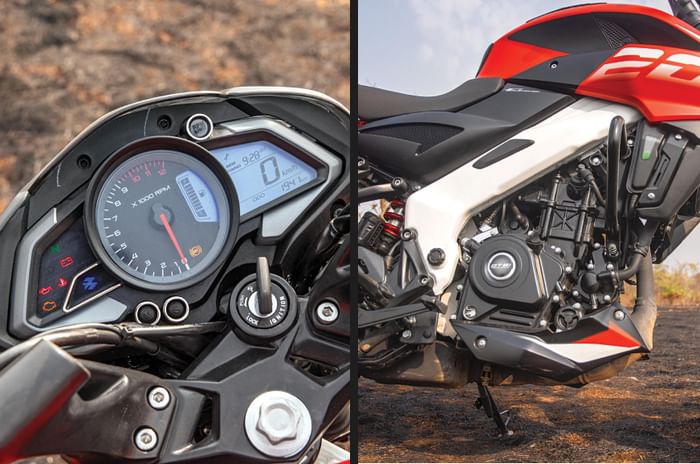
Take a look at the in-gear roll on figures and the Hornet is never far behind, and it’s actually the quickest in one of the tests. There’s a couple of reasons for this. First, the Hornet is very light – 10kg down on the RTR and 14kg lighter than the NS.
The other factor is that the Honda has more tightly packed gear ratios, which lends it an enjoyably punchy low and mid-range. This is just as well, because the Hornet engine sounds quite gruff and strained when you rev it out.
| Performance | |||
|---|---|---|---|
| Honda Hornet 2.0 | TVS Apache RTR 200 4V | Bajaj Pulsar NS200 | |
| 0-60kph | 4.53s | 4.19s | 4.10s |
| 0-100kph | 13.97s | 12.4s | 10.98s |
| 20-50kph (2nd gear) | 2.99s | 2.91s | 2.89s |
| 30-70kph (3rd gear) | 5.75s | 5.96s | 5.21s |
| 50-80kph (4th gear) | 5.42s | 6.65s | 5.53s |
| 60-0kph | 17.38m | 16.54m | 17.47m |
The NS is a completely different thing. This engine is all about the revs – it revs higher than the other two, and the harder you’re willing to make it sing, the more it will reward you. With its 6-speed gearbox, the NS has closely packed ratios as well, but since the power lives high up, it feels pretty dull if you try riding it in higher gears at city speeds. Nevertheless, the Pulsar has the highest top speed here of just above an indicated 130kph and while the RTR can hit about 120kph without too much stress, the Hornet begins to struggle at about 110kph.
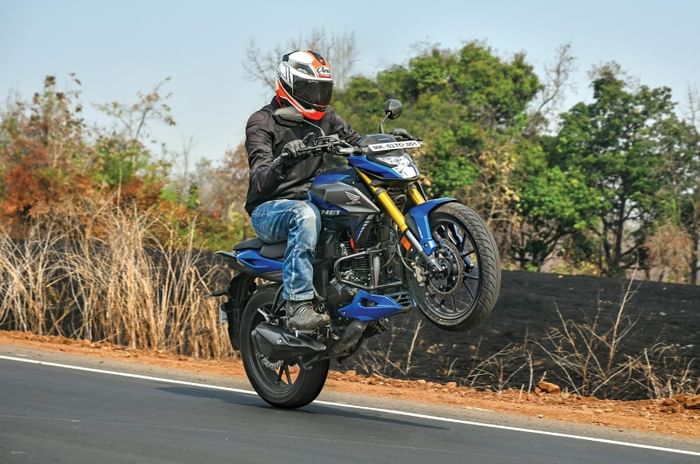
The RTR finds a middle ground, not only in terms of acceleration and top speed, but also in the in-gear acceleration. In slower urban conditions, it’s not as responsive and tractable as the Hornet, but it’s not as lazy as the NS either. One nice feature is the Glide Through Technology that holds the engine at just over idle so the bike gently creeps forward in heavy traffic without any throttle input. This sounds scary on paper, but it feels very natural and you often won’t even notice it.
The RTR also has three power modes – Sport, Urban and Rain. The lower two restrict power to 17.3hp, which thereby reduces the 0-100 time by 4sec and returns about 2kpl additional efficiency. Riding modes are unique at this price point, but where the RTR absolutely aces it is in the smoothness department. The engine is not only the most refined here, but it also produces an enjoyably deep exhaust note. Meanwhile, the thrashy sounding Pulsar has its charms at high RPMs, but the Hornet never sounds more interesting than a run-of-the-mill commuter.
Bajaj Pulsar NS200 vs Honda Hornet 2.0 vs TVS Apache RTR 200 4V: Ride and fuel efficiency
Performance is one thing, but even in this class of bikes, efficiency is just as important, especially given how we’re paying through the nose for this stuff these days. The Hornet reigns supreme in this department, with the RTR a distant second, and the NS doesn’t return more than 40kpl in either the city, or the highway.

It’s not just efficiency that’s important and customers in this segment tend to expect pretty much everything from these bikes. Sure, they need to be sporty and engaging, but they need to be comfortable and practical too. We’ve already discussed the riding positions, but what about the pillion seats? The NS and RTR are both reasonably comfortable and while the Hornet isn’t bad either, it’s not as spacious.
As far as suspension comfort goes, they’re all perfectly acceptable, but the RTR is noticeably more plush. Another point is that the RTR offers preload adjustability even for the front fork, which is great for setting up suspension sag based on rider weight. The Pulsar’s suspension is a little firmer and the Honda is probably the firmest here. Even so, it’s not stiff or uncomfortable – it just won’t sail through broken stretches with the same level of disdain.
Bajaj Pulsar NS200 vs Honda Hornet 2.0 vs TVS Apache RTR 200 4V: Handling
The upside to the RTR’s riding position reveals itself the moment you feel like attacking a winding road. Now, all three are fun and entertaining handlers, but the RTR is a cut above. Its balance between quick responses and stability keeps it engaging, but also planted and confident. The TVS Eurogrip tyres are grippy and feelsome, and when you factor in the power and braking abilities, the RTR is great fun.
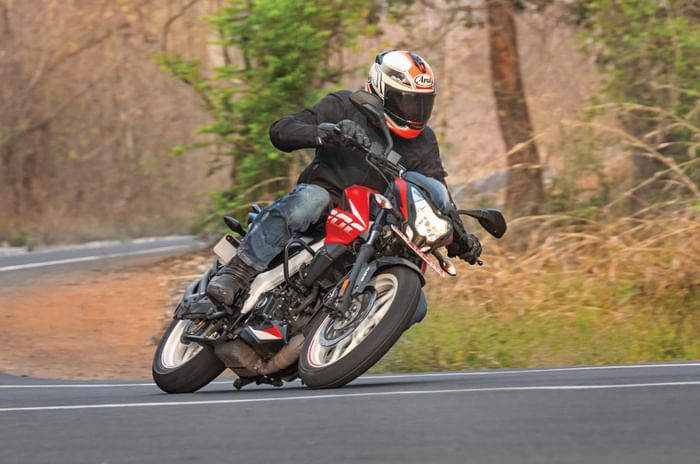
The Hornet comes very close, especially in terms of sheer chassis capability – it also has an exciting willingness to dive into a corner with great feel from the front end. What ultimately lets this bike down is the motor’s inability to serve up 200cc levels of enthusiasm and pace when you really wring it out.
The NS was the one that felt like it has the most potential in its chassis and engine, but a scraping main stand can give you a rude shock should you lean the bike all the way over. We also found that the rear monoshock is quite soft on the limit and this also nibbles away at the confidence the rider feels.
Bajaj Pulsar NS200 vs Honda Hornet 2.0 vs TVS Apache RTR 200 4V: Features
So, we’ve covered performance, efficiency, comfort and practicality. But there’s still one very important aspect to cover – features and value! Unsurprisingly, the oldest bike here is the least equipped. The Pulsar definitely has the most exciting mechanical specifications, but when it comes to features, the list is quite sparse. It’s the only one here with a halogen headlamp, its instrument console lacks a trip computer or a gear position indicator and its ABS only works on the front wheel. On the upside, the Pulsar’s analogue rev counter is from an earlier time, but it’s still a joy to have. This is also the only bike that has a side-stand engine kill feature.
The Hornet fares a bit better, with LED lighting all-round and it’s also the only one with hazard lights. Apart from that, it would appear that Honda chose to focus on the USD fork, and the Hornet has no other stand out features.

The RTR thoroughly thrashes the others when it comes to the sheer amount of kit you get. In typical TVS fashion, its dashboard gives you a heap of information, including 0-60kph and lap timers. Then there’s the riding modes that not only offer two different power levels, but also change the level of sensitivity for the ABS system. Speaking of which, the RTR is the only one that gives you the option of dual-channel ABS.
Another party trick is the RTR’s Bluetooth connectivity. This, along with the TVS SmartXConnect app, unlocks features like turn-by-turn navigation assists, call alerts, and it even has a crash alert feature. Riders who are interested can also access a bunch of motorcycle telemetry data, including top speed achieved, lean angle, G-force, speed and RPM data, average speed and more.
Once you consider the radial rear tyre, preload adjustable front fork, adjustable levers and the slipper clutch, it becomes clear that the RTR 200 doesn’t just offer great features for the segment, but it does so even compared with bikes that cost much more. You can also have the RTR 200 with all these features in a single-channel ABS variant for about Rs 5,000 less, if you like.
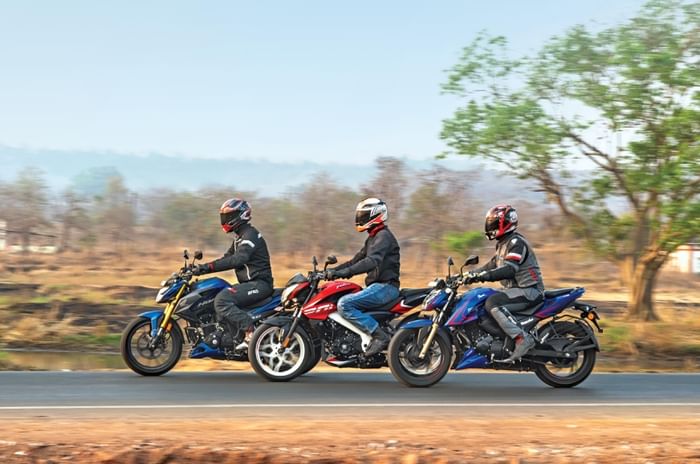
Bajaj Pulsar NS200 vs Honda Hornet 2.0 vs TVS Apache RTR 200 4V: Verdict
The Pulsar’s age is evident in this company. Its performance is strong on paper, but you need to rev it out to access it, and as a result, it’s not as effortless a daily commuter as the other two. But if you like that revvy character, and if you weigh an enjoyably sporty engine and flat-out performance as your top priorities, the Rs 1.33 lakh (ex-showroom) NS remains your best option at this price point.
As for the Honda, honestly, I’m still impressed with it, even when ridden back-to-back with these bikes. I think it’s the nicest bike to ride in big city conditions and proves to be impressively frugal too. But when you analyse the overall picture, there’s no escaping that the Honda is still giving you less performance and notably fewer features for the pretty high asking price of Rs 1.28 lakh (ex-showroom), which is exactly the same as the single-channel ABS version of the RTR 200.
If the Honda was about Rs 5,000- 7,000 cheaper, it would have been a different story, but as things stand, the TVS continues its reign at the top of the 200cc segment. At an equal Rs 1.33 lakh (ex-showroom) to the Bajaj, the TVS is certainly the best equipped bike here, but it goes deeper than just that. It also has the smoothest engine, strong performance, decent efficiency and most of all, it excels at putting a smile on your face. When you consider everything this bike has to offer, there’s no arguing with the fact that it is the best all-rounder here.


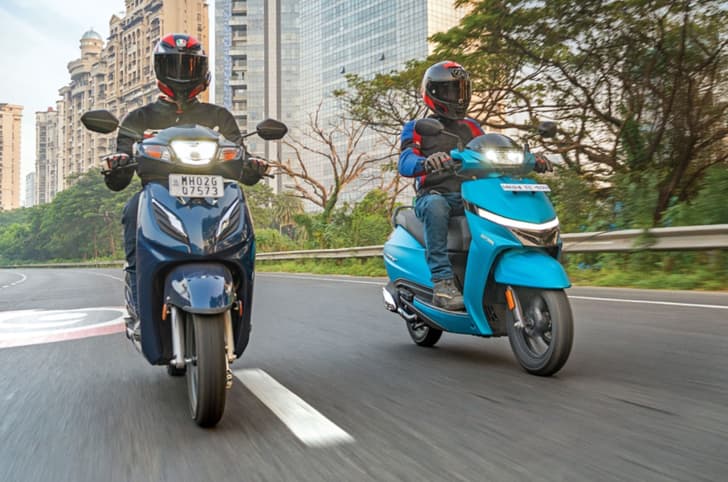









.jpg?w=728&q=75)
